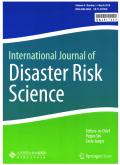An Index-Based Approach to Assess Social Vulnerability for Hamburg, Germany
IF 4
2区 地球科学
Q2 GEOSCIENCES, MULTIDISCIPLINARY
引用次数: 0
Abstract
Abstract In this study, we set out to develop a new social vulnerability index (SVI). In doing so, we suggest some conceptual improvements that can be made to existing methodical approaches to assessing social vulnerability. To make the entanglement of socio-spatial inequalities visible, we are conducting a small-scale study on heterogeneous urban development in the city of Hamburg, Germany. This kind of high-resolution analysis was not previously available, but is increasingly requested by political decision makers. We can thus show hot spots of social vulnerability (SV) in Hamburg, considering the effects of social welfare, education, and age. In doing so, we defined SV as a contextual concept that follows the recent shift in discourse in line with the Intergovernmental Panel on Climate Change’s (IPCC) concepts of risk and vulnerability. Our SVI consists of two subcomponents: sensitivity and coping capacity. Populated areas of Hamburg were identified using satellite information and merged with the social data units of the city. Areas with high SVI are distributed over the entire city, notably in the district of Harburg and the Reiherstieg quarter in Wilhelmsburg near the Elbe, as well as in the densely populated inner city areas of Eimsbüttel and St. Pauli. As a map at a detailed scale, our SVI can be a useful tool to identify areas where the population is most vulnerable to climate-related hazards. We conclude that an enhanced understanding of urban social vulnerability is a prerequisite for urban risk management and urban resilience planning.基于指数的社会脆弱性评估方法——汉堡,德国
摘要在本研究中,我们试图建立一个新的社会脆弱性指数(SVI)。在此过程中,我们建议对评估社会脆弱性的现有系统方法进行一些概念性改进。为了使社会空间不平等的纠缠可见,我们正在对德国汉堡市的异质城市发展进行一项小规模研究。这种高分辨率的分析以前是没有的,但越来越多的政治决策者要求。因此,考虑到社会福利、教育和年龄的影响,我们可以展示汉堡的社会脆弱性热点(SV)。在此过程中,我们将SV定义为一个上下文概念,该概念遵循了最近与政府间气候变化专门委员会(IPCC)风险和脆弱性概念一致的话语转变。我们的SVI包括两个子组件:敏感性和应对能力。利用卫星信息确定了汉堡的人口稠密地区,并将其与城市的社会数据单位合并。SVI高的地区分布在整个城市,特别是在靠近易北河的Wilhelmsburg的Harburg区和Reiherstieg区,以及人口稠密的eimsbttel和St. Pauli的内城地区。作为一张详细的地图,我们的SVI可以成为一个有用的工具,用来确定人口最容易受到气候相关危害的地区。我们得出结论,加强对城市社会脆弱性的理解是城市风险管理和城市韧性规划的先决条件。
本文章由计算机程序翻译,如有差异,请以英文原文为准。
求助全文
约1分钟内获得全文
求助全文
来源期刊

International Journal of Disaster Risk Science
GEOSCIENCES, MULTIDISCIPLINARYMETEOROLOGY-METEOROLOGY & ATMOSPHERIC SCIENCES
CiteScore
6.50
自引率
7.50%
发文量
63
审稿时长
13 weeks
期刊介绍:
The International Journal of Disaster Risk Science (IJDRS) provides a pioneering platform for researchers and practitioners aiming at greater resilience and integrated risk governance in view of local, regional, and global disasters. IJDRS breaks new ground in research about disaster risks by connecting in-depth studies of actual disasters and of specific practices of disaster risk management with investigations of the global dynamics of disaster risks and theories and models relevant for advanced integrated risk governance.
 求助内容:
求助内容: 应助结果提醒方式:
应助结果提醒方式:


